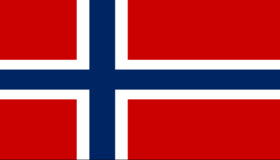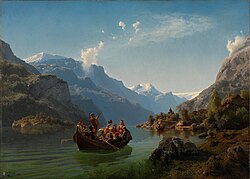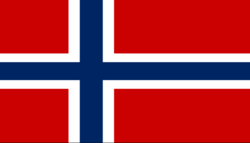Culture of Emerstari
| This article is part of on the |
| Culture of Emerstari |
|---|
 |
| Society |
| Traditions and Art |
| National symbolry |
| Other |
The culture of Emerstari is defined as the idiosyncratic norms of Emerstari and the Emerstarian people, the origin thereof being closely linked to the country's history, geography, and religion. Emerstarian culture is often associated with its traditionalism, hierarchy and patriarchy, directness, and good manners as well as the importance placed upon family and familial history, kinship, and faith in Christianity. There is also a large emphasis on pride in the Emerstarian king, — who is considered the national patriarch, as the head of government, state, and religion, — and the Emerstarian nation as a whole. A unique Emerstarian farm culture is sustained to this day by ancient Emerstarian property laws, further showing the importance in traditionalism and familial history.
Architecture
Emerstarian architecture begins with the turf and wooden structures of the ancient Emerstarians. Few period turf structures survive and the material has since fallen out of use, but numerous wooden churches and castles from the early middle ages still stand, and there is still a large interest in this material in the construction of modern buildings; this is especially reflected in the northern town of Trasberg, almost entirely built of wood, initially constructed as a hunting lodge of Folke II Knudt in 1843.
During the Era of Learning, in the fifteenth century, under Georg I Erik, large stone and brick palaces, cathedrals, and universities were constructed. There are copious Baroque and Rococo structures in Emerstari; however, the country is most known for its buildings in the styles of national romanticism and Scanian classicism, which took hold in the eighteenth and late-nineteenth centuries respectively.

Art

The field of art in Emerstari had traditionally been dominated by foreign artists from Marseile, Roele, and Canaria. It was not until the beginning of the national romantic period in the eighteenth century that prominent Emerstarian artists began to appear, such as Jakob David Engfeld, Lorens Olaf Erikssen, and Karl Johann Dal. Engfeld is known as the father of Emerstarian art for his many portraits of the Emerstarian nobility, royalty, and clergy; but Erikssen and Dal, however, were two of the most famous Emerstarian artists, both gaining royal patronage, of the nineteenth century, when Emerstarian artists were noted for their impressive landscapes.
Cuisine
Emerstari, with the exception of its cities, is known for its lack of grocery stores, Emerstarians opting to grow their own food or buy it from a local, specialized tradesmen, like a dairy farmer, orchardist, or butcher. Thus, Emerstarians are generally perceived as having a diet healthier than those of other nations. Emerstarian cuisine is also perceived as being somewhat bland, due to a lack of native spices and the historical need to preserve food for the winter. Fish are a critical part of many Emerstarian dishes, due to Emerstari's expansive coastline and inland waterways, but venison, rabbit, and poultry also appear in various traditional recipes. Beef and pork are usually only eaten in the southern parts of the country. Fruits, save for apples and berries and recently, pears, are not historic ingredients; rather, vegetables like potatoes, turnips, cabbage, and cucumbers are prevalent. Dairy is part of the Emerstarian diet as well, more so in the form of goat's produce than in the form of cow's.
Breakfast, eaten around ten o'clock per tradition, often consists of eggs and breads in various forms as well as oats, jam, sliced meats, and milk. Lunch has traditionally been an ignored meal in Emerstari as the Church of Emerstari endorses midday-fasting, and thus, it is light if eaten at all. Open sandwiches and dairy may appear with some type of ale or other drink. Dinner is the largest Emerstarian meal, partially due to the midday-fasting, and it traditionally consisted of two courses, one with the main meat item, a cooked meat of some sort, and another with vegetables and breads.
Folklore
Emerstarian folklore most notably consists of stories of historical and semi-historical persons of national importance, such as Emer, Hrudolf, Kveldur, and Eirikr Segersælla, relating to the national origin, but there are also stories of elves, huldas, wights, nightmares, trolls, giants, spirits, and tricksters. Emerstarian stories dating from before the eleventh century are usually poems, marked by their alliterative verse style that was used to create rythem, such as in the story of Kveldur, where ever other word in the same line begin with the same letter. More famous, though, are the stories from thereon until the late-thirteenth century kown as the Emerstarian sagas; these sagas told the stories of Emerstarian kings and adventurers. In the late middle ages and the early modern period, stories of knights and their heroic and pious deeds gained popularity.
Emerstarian language
Emerstarians traditionally speak the Emerstarian language, a member of the North Scanian language family. The modern Emerstarian language came about from Middle Emerstarian, spoken from the thirteenth to the fifteenth century, partially through the invention of the printing press and the translation of the Bible into Emerstarian during the Emerstarian Reformation. Middle Emerstarian was derived from Old Emerstarian, spoken from the ninth century to the thirteenth century, which was, in turn, derived from North Scanian, Old North Scanian, and Proto-Scanian. There have been historically many Emerstarian dialects across the country and there are still today many Emerstarian dialects across the country as well as in its former and existing colonies. While these dialects are all mutually intelligible, Midtenlandskemersk, also known as Kuingsemersk, is the dialect used for governance and law in Emerstari due to its status as the native dialect of the Emerstarian royal family.
Law
Emerstari retains its own unique system of law, known as Emerskelag, or Emers Law, based on the former English word for Emerstari, Emersland. It features both aspects of civil law and common law. Attourneys are known as fortallerer and judges as dommer, related to the Emerstarian words for doom, deem, and damn: døme, tildome, and fordome. Judges are referred to as Herr Rattlighedt, or Sir Justice, and the judges can both judge civil and criminal cases. Prior to the reformation of the Emers Law by Georg I Erik, the position of judge was often hereditary. Emerstarians are presumed innocent until proven guilty, and they have the right to a be heard by a jury of their peers during trial, if requested, who will advise the judge; constitionally, one half of the jury must consist of clansmen of the defendant's clan and one half of the jury must consist of clansmen of the plaintiff's clan in civil cases or clansmen whose clan claims the territory which the crime was committed in, in criminal cases. Officially, the Emerstarian sovereign heads the Emerstarian supreme court of seven judges and may grant pardons. Despite this, they often do not partake personally and are represented by the Chief Judge of the Supreme Court. Courts are open, public spaces in Emerstari, and thus, all court proceedings are open for Emerstarians to watch go on. The Emerstarian constitution is known as the Forbundshandling and provides the framework for Emers Law along with older documents and unwritten traditions, some based on biblical teachings.
Literature

One of the earliest pieces of Emerstarian literature is Kveldurs Saga as it is commonly known today; though, it is technically not a saga by the Emerstarian definition. It was written sometime between the eighth and the ninth centuries in Old Emerstarian about a sixth-to-seventh century figure in alliterative verse. Modern Emerstarian translations preserve the alliterative verse, where every other word in the same line begins with the same letter. Literature of Emerstari in the middle ages was often in the form of sagas, the most famous of which is cited as being Kung Eirikr Segersællas Saga, the text of which can be found here. Most sagas of this era were written by monks or scribes whose names are still known today whereas the alliterative epics of earlier eras are written by unknown authors. In the fourteenth century until the end of the sixteenth century, tales of the heroic and pious adventures of chivalrous knights and their romances became popular. Some of these stories still are popular in various versions today, such as the tale of Ulrik Leijonhjerte or Herr Donner Frederik. As the Age of Exploration came about with the discovery of Markion by Kristoffer Lorens Ljundstrom, Baron of Ljundstrom and with the creation of the Emerstarian Empire, the first Emerstarian novel was printed in the seventeenth century in the "traveller's tale" genre. For the next several centuries, the Emerstarian population was fascinated with newly discovered far off lands and colonies, and the books published during this time reflected that. The books of the seventeenth and eighteenth centuries were often in the form of a journal kept by the adventurer, but by the nineteenth century, the genre began to expand into other exploration than just seafaring exploration and third person tales began to see publishing as well. By the beginning of the twentieth century, though, the genre died out and was replaced by mystery. Within several decades, the book market expanded to such an extent, that a single genre no longer held so much popularity.
Music

Emerstari is most known abroad for its folk music, which persists still into the twenty-first century and is still one of the most popular musical genres in Emerstari; Emerstarian folk music shares roots with the folk music of its neighbors and can be marked by its use of fiddles, flutes, frame drums, and pipes. Horns, lurs, and guitars are noticeable as well. Not too many written songs survive from prior to fourteenth century, but there is believed to have been a flourishing culture of music and dance during the Emerstarian middle ages. Classical music first was introduced to Emerstari via Marseile, around the time time many Emerstarian national songs were written in the eighteenth century, such as "Regel Emerige!" and "Der Kuingssång." Domestic composers did not appear until the national romantic movement came about during the Emerstarian Golden Age in the nineteenth century. Villem Karl Stenhammer, Frederik Lars Alfssen, and Håkon Per Ljunden are often cited as the most famed Emerstarian classical composers. Classical music had overshadowed folk music, but upon the decline of classical music in the 1920s, folk music emerged again, as did swing musi, a derivative form of classical music in Emerstari. Together, these two genres make up much of the national musical market; with few exceptions, other genres are all imported. Rap, punk, and metal and other genres of that sort are typically frowned upon in Emerstari, being associated with immigrants, crime, or cultural invasion and anti-establishmentism.
Religion
Abrahamic religion has, according to Emerstarian tradition, been a part of Emerstarian culture since Hemar, the great-grandson of Noah through Japheth and Magog, for whom Emerstari is named, led the settlement of Emerstari sometime after the Deluge. However, in the time between Hemar's migration and the introduction of Christianity to Emerstari, it is cited that this pre-Judaic Abrahamic religion was somewhat corrupted through the ages and evolved into a monotheistic Emerstrú and a polytheistic Norstrú. Shortly after the Ascension of Jesus, it is believed that Christian evangelists came to Emerstari and found initial success in converting those who followed Emerstrú; most followers of Norstrú converted by the third century, but there were some areas that still showed idolation towards the various gods of Norstrú as late as the eleventh century, when a crusade was launched against a heretical revolt.
After the War of the Emerstarian Succession, which ended 1444, Georg I Erik, who had converted several years prior, split the Church of Emerstari from the Catholic Church, making Lutheranism to the state religion, primarily on the basis of his belief in the five solae. A Prysbeterian minority grew in some of the rural north by the sixteenth century. The Emerstarian King or King-regent is the Patriarch of the Church of Emerstari, but its foremost primate is the Bishop of the Synod, who is elected every ten years by and from the numerous Bishops of Emerstari. The Bishop of the Synod also is regarded as the foremost priamte by Emerstarian Lutheran churches in former colonies.
Sport

Emerstari has participated in the Estelian Hastiludia since its conception in 1909, being one of the founding members of the Hastiludia Committee, and it has hosted the event in 1915, 1931, 1936, 1957, 1969, 1981, 1993, 2011, 2017, and 2029. Bandy is considered a national sport by many, and the Emerstarian men's team is regarded as the best in Arda en' Estel, winning gold in the winter Hastiludia twelve times. Gårdboll, often regarded as an Emerstarian take on the various types of football, is also considered a national sport by some; the Emerstarian men's team has won gold in the sport four times since its introduction into the summer Hastiludia in 1957. Badminton, tennis, golf, and equistrian sports are popular in Emerstari, traditionally being sports of the upper class. Handball, skiing, and track and field sports are also popular among Emerstarians. Indeed, Emerstarians are considered regionally as some of the best cross country runners. Einar Villem Holm, Mikael Per Strand, Andrea Sonja Erikssen, and Olaf Thomes Frederikssen are revered as some of the current best Emerstarian athletes in their respective sports.
Symbols
Flags
Two flags are officially recognized as being in use by the Emerstarian government, those being known unofficially as the Korser, or the Crosser, and the Hørner, or the Angled. Both feature the same colors, red, white and blue; the Crosser flag is usually preferred by the monarchy as it features a Christian cross and serves as the single flag of the Emerstarian Empire, but the Angled flag is usually preferred by the legislature and is the flag that is often used abroad by foreigners to represent Emerstarians. Additionally, the Angled flag is actually the older of the two and is believed to have been used by Kveldur. The fact that Emerstari has dual flags as well as dual capitals, dual anthems, and dual monarchs in the case of that a female inherits the throne, has lead to a stereotype that Emerstarians are vague, neutral, and indecisive.
Arms
The Arms of Emerstari is, by law, the greater armorial achievement of the Emerstarian monarch; it therefore has been, since 1718, based on the arms of the members of the House of Eirikr.
Anthems
Emerstari has both a state anthem and a royal anthem. The state anthem is Ervigner Rike, or Eternal Nation, and the royal anthem is Der Kuingssång, or the King's Song. Ervigner Rike, sometimes referred to as Hagel, Emerige, or Heil, Emerstari was written by Frederik Johann Kjellstrom in 1707 and put to music by his cousin in 1710. It was adopted as the national anthem by Ervin III Karl in 1716. Der Kuingssång was written and put to music in 1744 by Hughes Erik Strand to honor Erik VIII Olaf upon his death. It, however, was not made the royal anthem until 1779 by Olaf III Aleksender.





